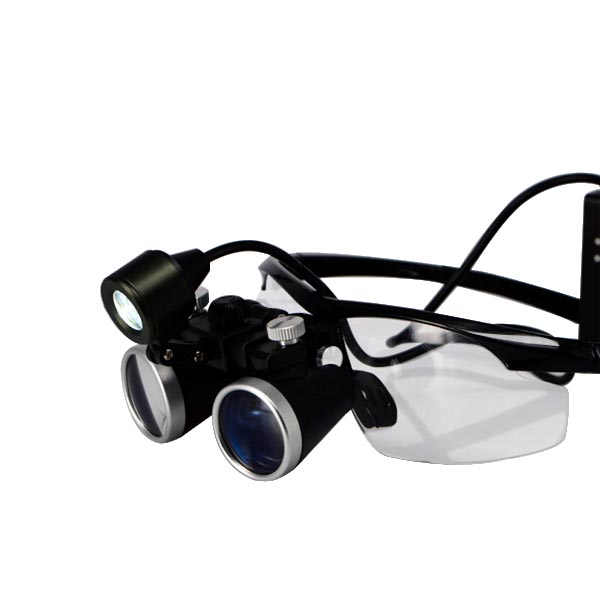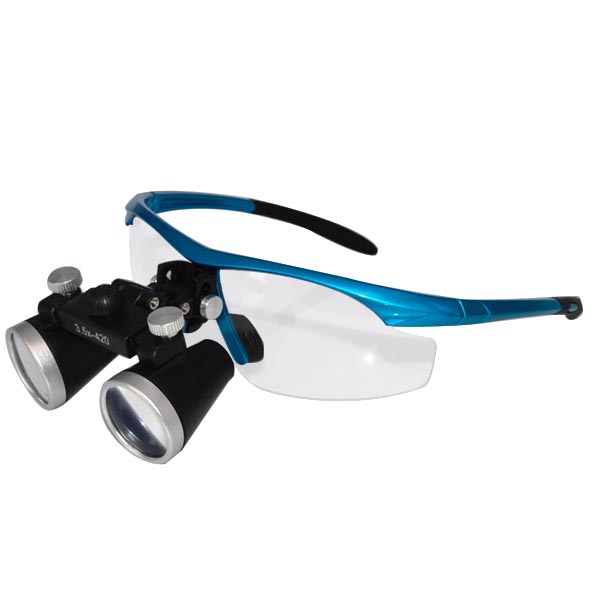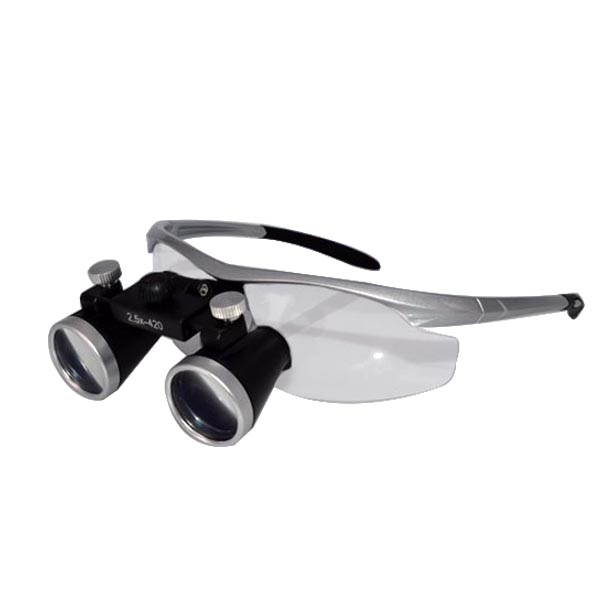Dental loupes enhance visual acuity through the magnifying effect, which not only make dental operation more accurate, but also help doctors to improve the operation posture of oral diagnosis and treatment to a certain extent. To integrate ergonomics and efficiency, dentist magnifying glasses enable dentists and surgeons to work in comfort. Choosing the right tilt Angle will provide the minimum forward tilt and reduce tension in the neck. For ease of use, the dental hygienist magnifying glasses are designed with the best Angle of inclination.



The dental assistant loupes serve as a medical device and need to be fitted specifically for each patient in the treatment. There are two advantages to custom loupes dental glasses. The first one is dental magnifying glasses with light that fits correctly and allows the dentist to sit erectly, minimizing the stress from the neck and shoulder. The second one, dentist eye magnifier enables to enhance visual acuity to improve clinical outcomes.
There are three types of dental loupes, flip-up dental hygiene loupes, lens loupes and flip loupes. The flip-up dental binocular loupes can be adjusted, offering dentists more options to change the angle based on if they are sitting or standing. The lens loupes is fixed to the dentist’s protective eyewear which cannot be moved. They have a wider view field than flip-up loupes and can be customized by adding a prescription lens if necessary. The flip loupes have the function which can combine the customization options of lens loupes with the convenience of flip-up loupes. These three dental surgical loupes are equally efficient and can be chosen according to the dentist’s needs and personal preferences.
Classification of Dental Lopes
(1) According to the different ways of wearing dental magnifying glass, dental loupes for sale can be divided into headwear types and glasses types.
Glasses type can be divided into TTL(Through The Lens) and Flip (flip-up). The cylinder eyepiece of the former passes through the bearing eyepiece (usually the lens); The latter attaches to the front of the glasses in a hinged form and can be flipped up and down.
(2) According to the different optical principles of loupes for sale, it can be divided into Galileo type and Kepler type.
Galileo magnifier is small in size, and its magnification is generally 2.5 times (up to 3.2 times). Because of its optical particularity, the edge image will be deformed, so it is not recommended to use more than 2.8 times Galileo magnifier. It is usually customized, pupil distance is not adjustable, special person.
Kepler-type magnifiers, also known as prism magnifiers, provide magnification of 3.2 to 8 times and provide sharp edge images with adjustable pupil distances.

The magnification depends mainly on the individual needs. However, we can offer some suggestions for you to make a better choice.
The first recommendation is to choose the lowest comfortable magnification, which will provide a wider field of view.
Here are some experience options to consider:
Clinical application magnification.
General Dentistry, Dental Hygiene Prevention, Implants: 2.5x.
Dental pulp, crown and bridge repair work: 3.5x - 4.0x.
Laboratory work, technicians: 4.0X-5.0X.
The working distance is the distance between the surgeon's eyes and the patient's mouth.
First of all, to determine the normal working distance in the normal working state, the correct posture to ensure the surgeon comfortable, straight back, not too tilted. This process can be adjusted by someone else.
You can also refer to the following table to help you know the best working distance:
Height & lt;170 cm 170-190 cm >190 cm
Sitting posture 340 mm 420 mm 500 mm
Standing posture 420 mm 500 mm 550 mm
The best frame size can be determined by the following methods:
A is the most important parameter to determine the size of the frame - the temple distance.
Find a pair of glasses that are comfortable to wear and measure the temple distance between the frames. Refer to the table below to select the nearest size to determine the size of the frames.
Frame size: small medium to large
A -- Temple distance 126 mm 131 mm 139 mm
B-lens diameter 50 mm 52 mm 56 mm
C-mirror bridge width 15 mm 15 mm 15 mm
Full-size frame:
D -- Adjustable pupil distance -- Galilean type: 46mm-70mm
D -- Adjustable pupil distance -- Prismatic type: 48mm-80mm

